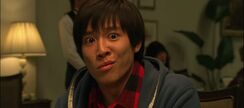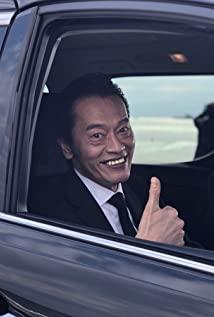The first timeline: The future girl went back to 2007 and disappeared after meeting Jiro. In 2008, Jiro lived alone, was shot and became cerebral palsy. Because of winning the lottery, he spent 60 years building a robot in the shape of a girl and letting it return to the past to save himself.
Explanation: This is a branch of the movie, in which there must be a part where the girl of the future crosses, because Jiro only has the prototype to make a robot after seeing her.
Second Timeline: The future girl went back to 2007, and disappeared after meeting Jiro. In 2008, Jiro lived alone and was shot. The robot saved him and helped him through the difficulties many times. In the 2009 Tokyo Earthquake, the robot was destroyed to save Jiro. Jiro spent his life trying to repair it, and then passed away.
The third timeline: In 2133, the future girl saw a robot exactly like herself, bought it, and obtained Jiro's past through a memory chip, and then had a relationship with their subtle and poignant love. She then took a time machine back to 2007 and disappeared. After the Great Tokyo Earthquake in 2009, she reappeared to heal Jiro's loss of the robot and spend the rest of his life with him.
PS:
1. According to the plot, the future girl has traveled twice. The first time in 2007 and the second time after the 2009 Tokyo earthquake, the two crossings led to three different endings. After the first crossing, the first timeline and ending were created, but this timeline gave rise to the second ending. Then the second time traveled to 2009, and the third ending was formed.
2. If it is interpreted as changing the future by reversing time, it seems plausible, but it cannot explain a problem.
The motivation for the future girl to go back to 2007 is because she saw the same robot as herself, so there should be a timeline in which she did not return to 2007 before that. That is to say, Jiro did not meet the girl in 2007, but became cerebral palsy in 2008, and the later outcome is unknown. If Jiro can make a robot, it must not look like a girl, because the two have never met. According to this line, it is impossible for girls in the future to see robots like themselves in 2133.
Some people say that the girl's return to 2007 is caused by the second time line, but if the second ending is to be established, then she must go back to 2007 first to provide Jiro with the possibility of making robots. This forms a contradiction. Since the motives are gone, why should she go back to the past?
3. In fact, this is not a mistake of the screenwriter, but the concept of a single timeline can be abandoned and regarded as a parallel universe, then all this is justified. It's just that several Jiro with different fates coexist, can you accept this imperfection? But in my opinion, a happy ending is enough.
View more about Cyborg She reviews











